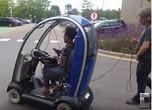In the second meeting of Rural Visions, we discussed some of the distinct challenges and opportunities for carrying out research in rural contexts. Gary Bosworth (School of Geography) began by discussing the value of mixed methods to capture a full understanding of rural issues. Despite funding calls promoting mixed methods, there has been only limited progress in the number of publications in the main rural journals using mixed methods. It was argued that this could relate to word-count limitations, prejudices within journals or the inevitable problems that arise from multiple reviewers favouring either qualitative or quantitative methods.
Mixed methods can help to overcome some of the limitations of secondary datasets, which often only give the “bigger picture” perspective and lack the quantity of data when compared to urban regions. It was noted that smaller numbers in rural areas also give rise to ethical considerations and confidentiality concerns.
A further advantage of mixed methods approaches is that researchers can overcome problems of different definitions and representations of rurality. Combining statistical and policy-based delineation of rural places (more likely applied in quantitative data) with alternative socio-cultural interpretations of rurality (requiring a more qualitative lens) can draw out the true influences that rurality may have on the issues being studies.
The second presentation, from Fen Kipley (School of Social and Political Sciences), drew on her personal experiences of community-based research in former military housing estates in rural Lincolnshire. Fen emphasises the extra need to engage with ALL members of the community in order to gain their trust. In a rural setting, the researcher quickly becomes known to the community and attending all sorts of events is an important way to be seen as impartial. In Fen’s case this included sessions with the pre-school, with pensioners, with parish councillors and other voluntary associations and even going to church. Combined with the distances that can be involved and poor transport infrastructure and often limited places to stay, this all adds to the time required to gather robust qualitative data in rural areas.
Building trust with residents empowered people to engage in workshops and speak passionately and positively about how they could improve their communities. Fen’s use of “Appreciative Inquiry”, borrowed from business research, proved particularly effective at overcoming stigma attached to certain aspects of the local community too. As well as trust-building, immersion in the local community is also critical for understanding the internal power relations and identifying (and maybe circumventing) gatekeepers to give a voice to all people in rural communities.
In summary, we concluded that rural research is not just distinguished by small numbers and practical challenges of remoteness. Researchers must also be attuned to local community dynamics and avoid making assumptions about what the rural means to people living and working there. Entering the rural territory with an open mind and a willingness to listen, understand and give voice to residents will deliver the most meaningful insights… but this takes time and commitment.

